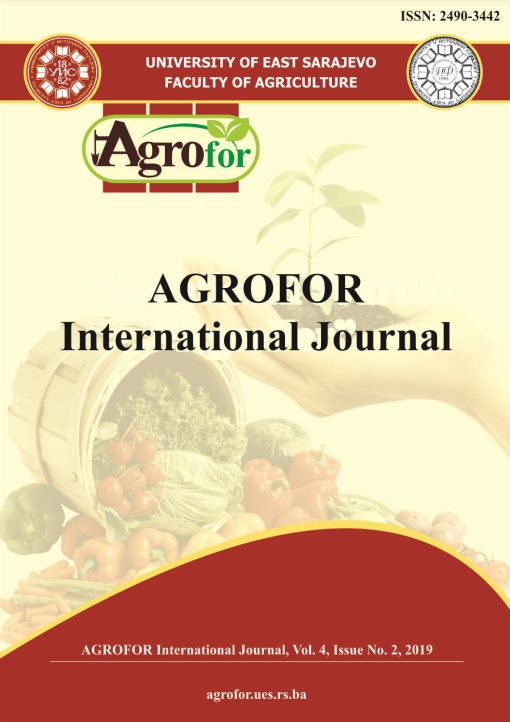MICRONUTRITIENT VARIABILITY IN MAIZE INBRED LINES
DOI:
https://doi.org/10.7251/AGRENG1902043MAbstract
Development of micronutrienten riched staple plant foods through plant breeding holds promise for sustainable and cost-effective food-based solutions to combat micronutrient deficiencies. The first step in this process is screening aviable germplasm for micronutritient content, so the aim of this study was determination of carotenoids and tocopherols content in set of maize inbred lines. Carotenoids (lutein, zeaxanthin and β-carotene) and tocopherols (α, β+γ and δ) content in 101 maize inbred lines with different kernel type (37 orange, 29 yellow, 4 white,19 sweetcorn and 12 popcorn) were determined by HPLC-DAD. The mean values of L+Z, β-carotene, α-tocopherol, β+γ tocopherol, and δ-tocopherol, were 31.34, 8.72, 10.22, 49.17 and 1.81 μg/ g, respectively. Content of α -tocopherol was in the range from 2.22 to 38.14 μg/g and β+γ tocopherols from 12.10 to 105.52 μg/g, β-carotene 1.20 to 39.37 μg/g and lutein+zeaxanthin 11.28 to 69.31 μg/g. White maize lacked carotenoids in the endosperm due to the presence of recessive genes. The highest value of β-carotene had inbred line H, L+Z inbred W-4, γ-tocopherols KRW 803-3-1-2-1 and α –tocopherol P21. Orange kernel inbred lines had the highest value of L+Z and β-carotene, yellow kernel inbred lines α –tocopherol, whereas sweetcorn inbreds had the highest value of γ-tocopherols. The genetic background undoubtedly influences chemical quality and line with high content of particularly micronutritients may be used in breeding program to improve nutritional value.

